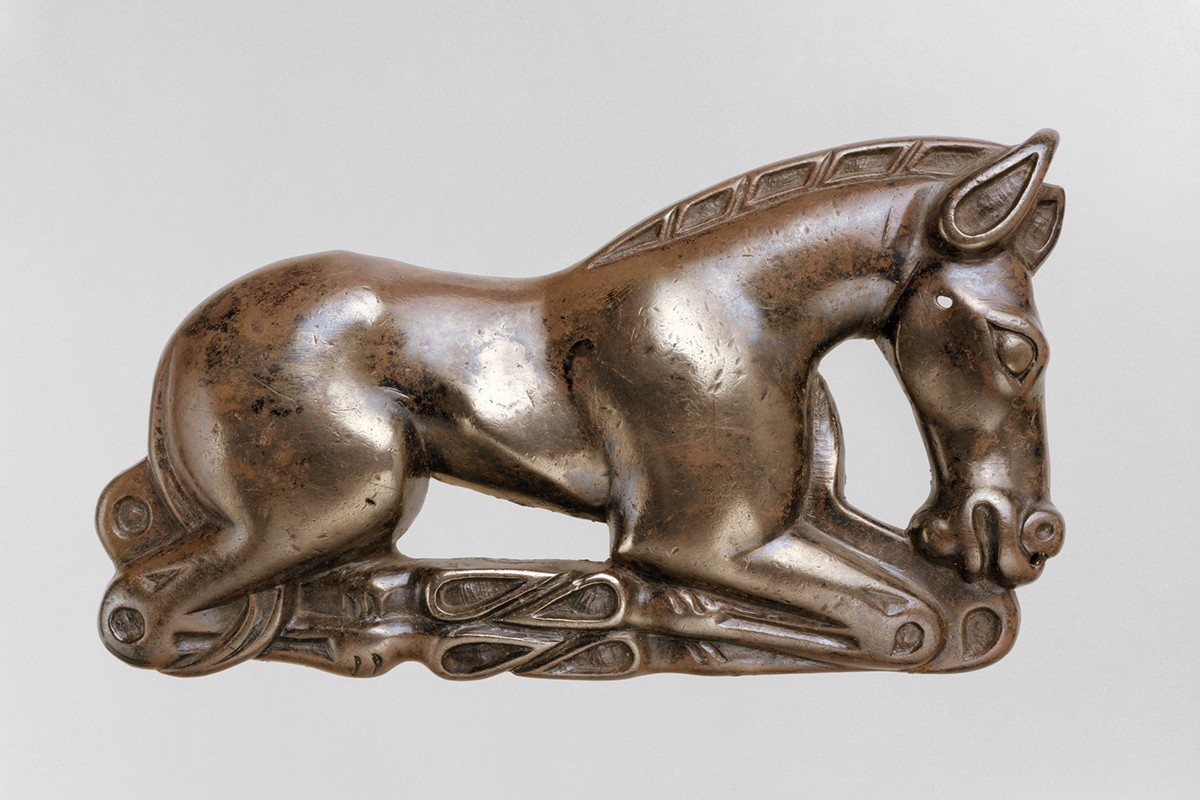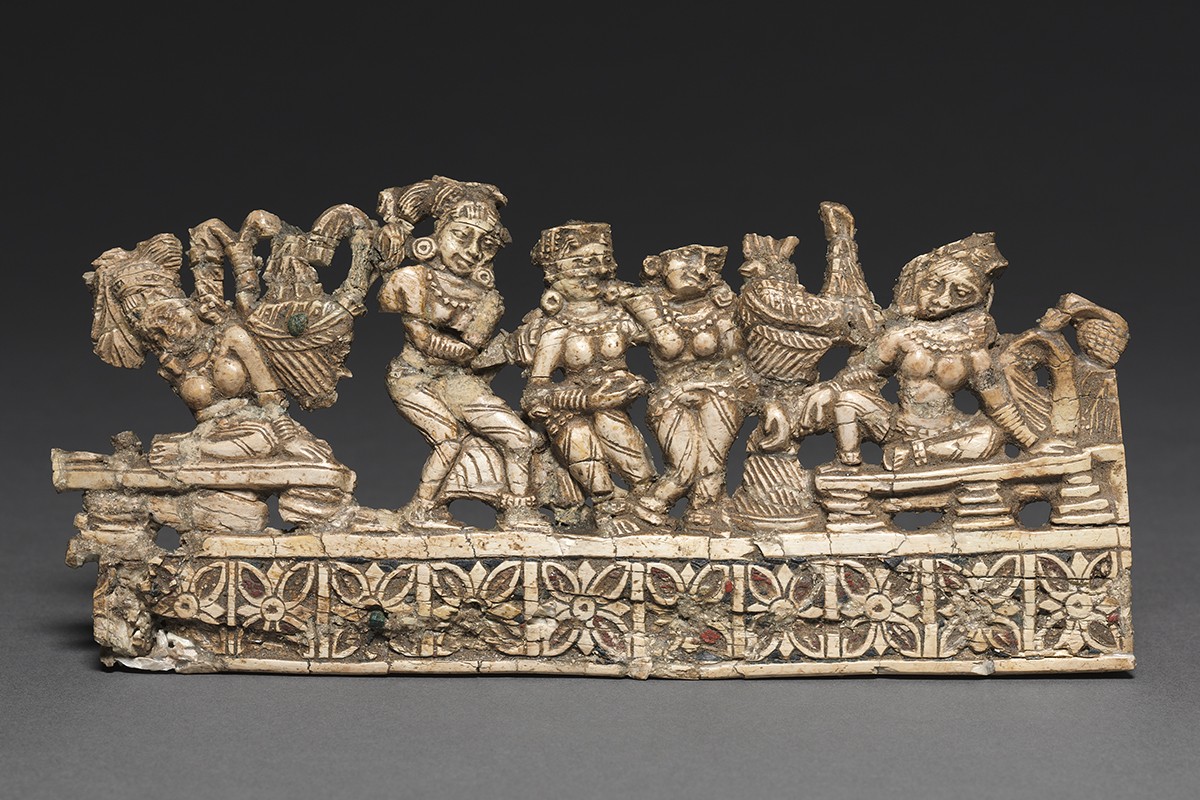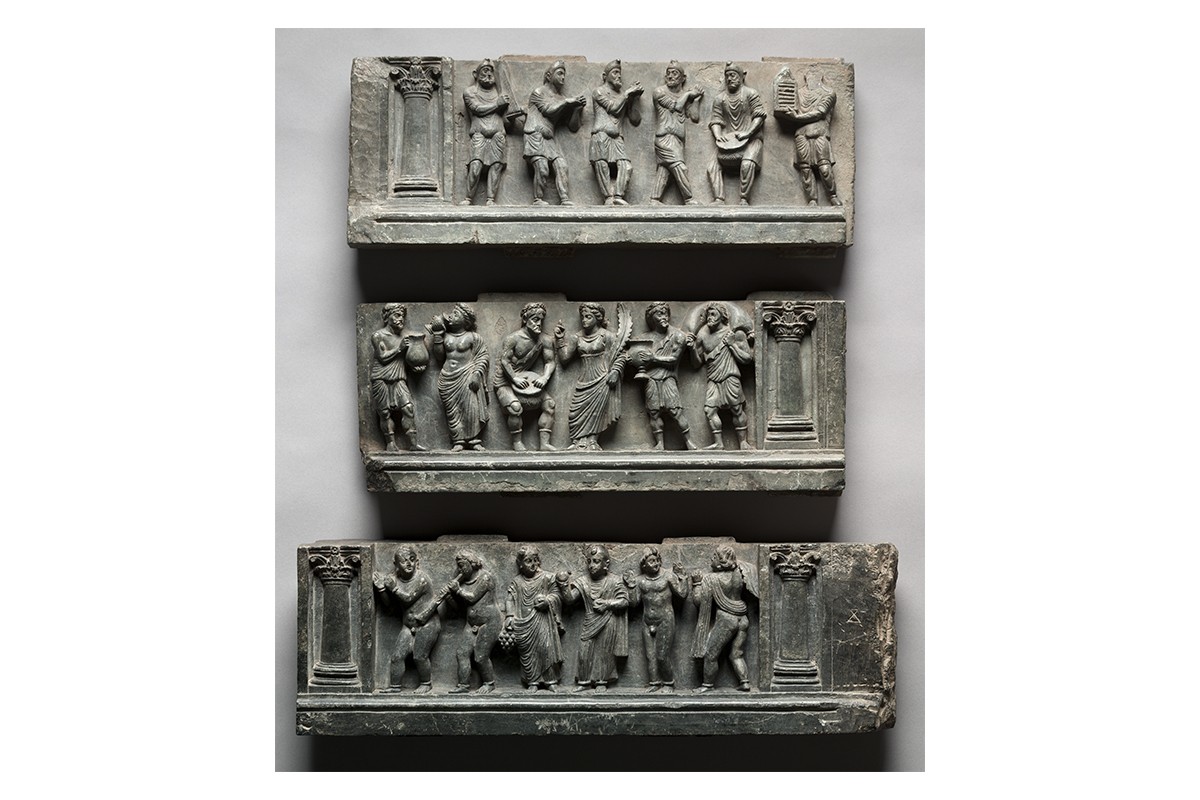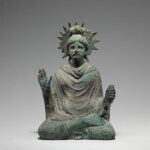Trade Grows between the Mediterranean and Asia
100 BCE–100 CE
The consolidation of stable, cosmopolitan polities through Eurasia encourages the growth of trade through both land and sea routes. Often called the Silk Road and the Maritime Silk Route — though cotton and spices were traded in larger quantities — these trade networks facilitate travel and the exchange of goods at unprecedented scales. The maritime routes connect existing independent trading centres on the Mediterranean Sea, the South China Sea and the Indian Ocean; particularly important to this is the harnessing of the monsoon winds for annual trade between Egypt and the western coast of India. By the first century CE, an extensive sea trade route emerges, linking ports in Roman Egypt and Arabia with South Asia, through ports in present-day Gujarat, Tamil Nadu and Sri Lanka. Overland connections such as the Persian Royal Road, and the expansion of Hellenistic polities and the Han dynasty into Central Asia, link China to the Mediterranean through the Parthian and Bactrian empires.
Bibliography
Abulafia, David. The Boundless Sea. London: Penguin Random House, 2019.
Friedland, Rosie, and David Rheinstrom. “Transregional Trade: The Silk Road.” Khan Academy, Accessed August 16, 2021. www.khanacademy.org/humanities/world-history/ancient-medieval/silk-road/a/the-silk-road.
Kearney, Milo. The Indian Ocean in World History. New York: Routledge, 2004.
Singh, Upinder. A History of Ancient and Early Medieval India: from the Stone Age to the 12th Century. New Delhi: Pearson, 2016.
Feedback 
This entry appears in
Art in South Asia
Visit Timeline
Associated Timeline Events
First Published: March 11, 2024
Last Updated: August 6, 2024











